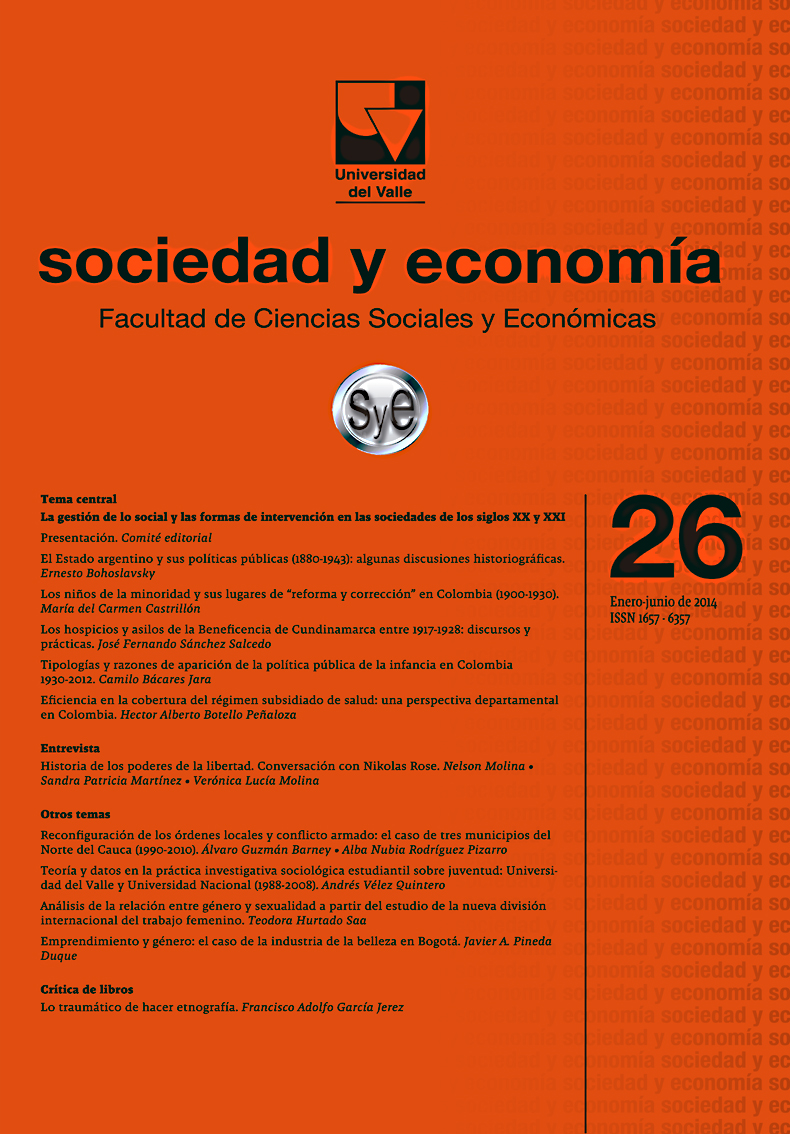Minority Children and Their Places of “Reform and Correction” in Colombia (1900-1930)
Published:
2014-01-15
Keywords:
Minor, Children Courts, and Correctional HomesMain Article Content
This article outlines some characteristics of institutional spaces for containment andsupport of children categorized as minor under conditions of poverty, abandonment andsocial risk, during the first three decades of the twentieth century in Colombia. Throughthe revision of press articles, a Salvationist project can be evidenced which is includedin legal, medical, and pedagogical discourses that define not only corrective/repressiveactions —as it has frequently been postulated in the studies on children on that time—but also compassionate/re-educational actions. In the core of this combination the categoriesassociated with childhood are rearranged, among which there is that of “minors”acquiring life in the legislation and in spaces of institutional containment (childrencourts, correctional homes, agricultural farms).
1.
Castrillón M del C. Minority Children and Their Places of “Reform and Correction” in Colombia (1900-1930). soc.eco [Internet]. 2014 Jan. 15 [cited 2025 Dec. 31];(26):41-64. Available from: https://sociedadyeconomia.univalle.edu.co/index.php/sociedad_y_economia/article/view/3951
Downloads
Download data is not yet available.

This work is licensed under a Creative Commons Attribution-NonCommercial 4.0 International License.
Revista sociedad y economía editada por la Facultad de Ciencias Sociales y Económicas de la Universidad del Valle se encuentra bajo una Licencia Internacional Creative Commons Atribución - No comercial 4.0
Basada en una obra en http://sociedadyeconomia.univalle.edu.co

